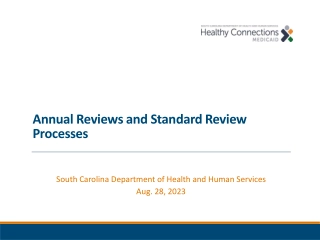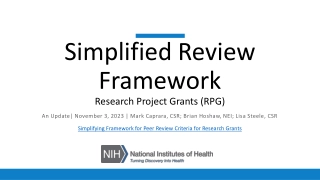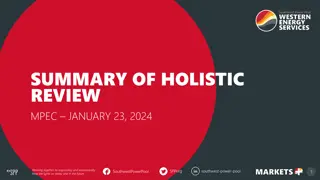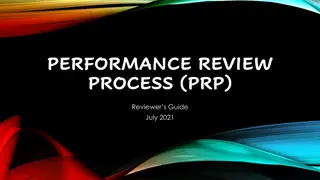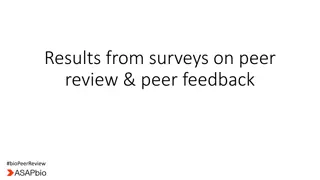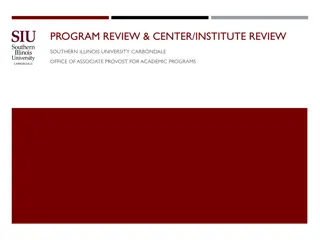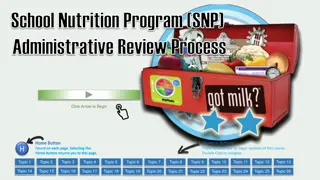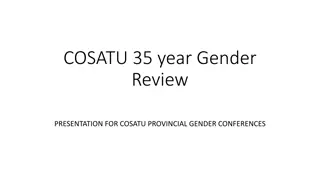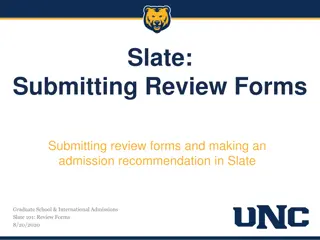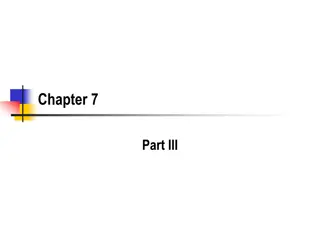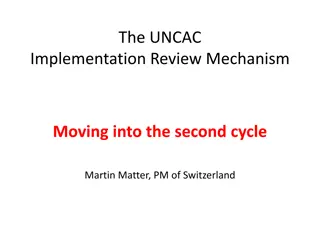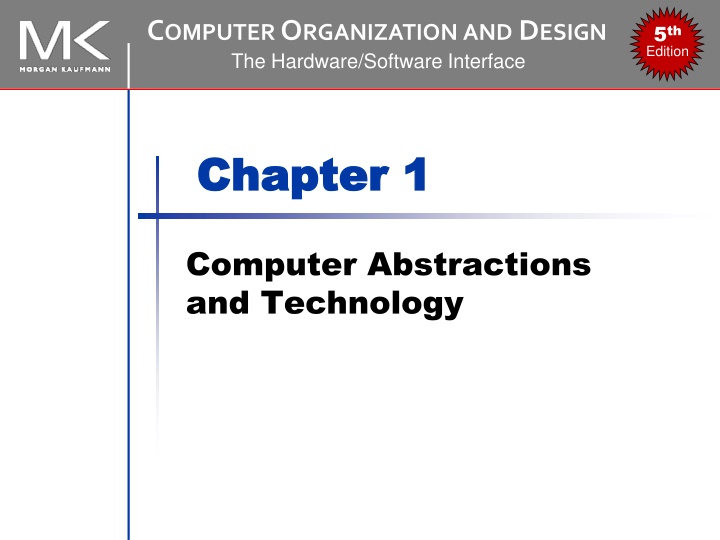
Computer Organization and Design: Hardware/Software Interface 5th Edition Overview
Explore the different classes of computers, including personal, server, supercomputers, and embedded systems. Learn about the evolution into the PostPC era with mobile devices and cloud computing. Discover the essential components of a computer system and the software layers below your programs. Dive into the fundamentals of computer architecture and technology presented in Chapter 1 of "Computer Organization and Design: The Hardware/Software Interface, 5th Edition".
Download Presentation

Please find below an Image/Link to download the presentation.
The content on the website is provided AS IS for your information and personal use only. It may not be sold, licensed, or shared on other websites without obtaining consent from the author. If you encounter any issues during the download, it is possible that the publisher has removed the file from their server.
You are allowed to download the files provided on this website for personal or commercial use, subject to the condition that they are used lawfully. All files are the property of their respective owners.
The content on the website is provided AS IS for your information and personal use only. It may not be sold, licensed, or shared on other websites without obtaining consent from the author.
E N D
Presentation Transcript
COMPUTER ORGANIZATIONAND DESIGN The Hardware/Software Interface 5th Edition Chapter 1 Chapter 1 Computer Abstractions and Technology
Classes of Computers Personal computers General purpose, variety of software Subject to cost/performance tradeoff Server computers Network based High capacity, performance, reliability Range from small servers to building sized Chapter 1 Computer Abstractions and Technology 2
Classes of Computers Supercomputers High-end scientific and engineering calculations Highest capability but represent a small fraction of the overall computer market Embedded computers Hidden as components of systems Stringent power/performance/cost constraints Chapter 1 Computer Abstractions and Technology 3
The PostPC Era Chapter 1 Computer Abstractions and Technology 4
The PostPC Era Personal Mobile Device (PMD) Battery operated Connects to the Internet Hundreds of dollars Smart phones, tablets, electronic glasses Cloud computing Warehouse Scale Computers (WSC) Software as a Service (SaaS) Portion of software run on a PMD and a portion run in the Cloud Amazon AWS, Google Compute Engine, Microsoft Azure Chapter 1 Computer Abstractions and Technology 5
COMPUTER HARDWARE AND SOFTWARE Chapter 1 Computer Abstractions and Technology 6
1.4 Under the Covers Components of a Computer Same components for all kinds of computer Desktop, server, embedded Input/output includes User-interface devices The BIG Picture The BIG Picture Display, keyboard, mouse Storage devices Hard disk, CD/DVD, flash Network adapters For communicating with other computers Chapter 1 Computer Abstractions and Technology 7
1.3 Below Your Program Below Your Program Application software Written in high-level language System software Compiler: translates HLL code to machine code Operating System: service code Handling input/output Managing memory and storage Scheduling tasks & sharing resources Hardware Processor, memory, I/O controllers Chapter 1 Computer Abstractions and Technology 8
Levels of Program Code High-level language Level of abstraction closer to problem domain Provides for productivity and portability Assembly language Textual representation of instructions Hardware representation Binary digits (bits) Encoded instructions and data Chapter 1 Computer Abstractions and Technology 9
A Safe Place for Data Volatile main memory Loses instructions and data when power off Non-volatile secondary memory Magnetic disk Flash memory Optical disk (CDROM, DVD) Chapter 1 Computer Abstractions and Technology 10
Networks Communication, resource sharing, nonlocal access Local area network (LAN): Ethernet Wide area network (WAN): the Internet Wireless network: WiFi, Bluetooth Chapter 1 Computer Abstractions and Technology 11
Abstractions The BIG Picture The BIG Picture Abstraction helps us deal with complexity Hide lower-level detail Instruction set architecture (ISA) The hardware/software interface Application binary interface The ISA plus system software interface Implementation The details underlying and interface Chapter 1 Computer Abstractions and Technology 12
Integrated Circuit Cost Cost per wafer = Cost per die Dies per wafer Yield Dies per wafer Wafer area Die area 1 = Yield + 2 (1 (Defects per area area/2)) Die Nonlinear relation to area and defect rate Wafer cost and area are fixed Defect rate determined by manufacturing process Die area determined by architecture and circuit design Chapter 1 Computer Abstractions and Technology 13
PERFORMANCE Chapter 1 Computer Abstractions and Technology 14
1.6 Performance Defining Performance Which airplane has the best performance? Boeing 777 Boeing 777 Boeing 747 Boeing 747 BAC/Sud Concorde BAC/Sud Concorde Douglas DC- 8-50 Douglas DC-8-50 0 2000 4000 6000 8000 10000 0 100 200 300 400 500 Cruising Range (miles) Passenger Capacity Boeing 777 Boeing 777 Boeing 747 Boeing 747 BAC/Sud Concorde BAC/Sud Concorde Douglas DC- 8-50 Douglas DC-8-50 0 100000 200000 300000 400000 0 500 1000 1500 Cruising Speed (mph) Passengers x mph Chapter 1 Computer Abstractions and Technology 15
Response Time and Throughput Response time How long it takes to do a task Throughput Total work done per unit time e.g., tasks/transactions/ per hour How are response time and throughput affected by Replacing the processor with a faster version? Adding more processors? We ll focus on response time for now Chapter 1 Computer Abstractions and Technology 16
Relative Performance Define Performance = 1/Execution Time X is ntime faster than Y Performanc e Performanc e X Y = = Execution time Execution time n Y X Example: time taken to run a program 10s on A, 15s on B Execution TimeB / Execution TimeA = 15s / 10s = 1.5 So A is 1.5 times faster than B Chapter 1 Computer Abstractions and Technology 17
Measuring Execution Time Elapsed time Total response time, including all aspects Processing, I/O, OS overhead, idle time Determines system performance CPU time Time spent processing a given job Discounts I/O time, other jobs shares Comprises user CPU time and system CPU time Different programs are affected differently by CPU and system performance Chapter 1 Computer Abstractions and Technology 18
Measuring performance on benchmarks Benchmark: agreed upon application, used for performance studies Real application Most representative Most difficult to set up Application kernels Find the most time consuming part of an app Synthetic benchmarks Simplified kernels Useful for design studies Peak performance Only useful in marketing slides Chapter 1 Computer Abstractions and Technology 19
Understanding Performance Algorithm Determines number of operations executed Programming language, compiler, architecture Determine the number of machine instructions executed per operation Processor and memory system Determine how fast instructions are executed I/O system (including OS) Determines how fast I/O operations are executed Chapter 1 Computer Abstractions and Technology 20
CPU Clocking Operation of digital hardware governed by a constant-rate clock Clock period Clock (cycles) Data transfer and computation Update state Clock period: duration of a clock cycle e.g., 250ps = 0.25ns = 250 10 12s Clock frequency (rate): cycles per second e.g., 4.0GHz = 4000MHz = 4.0 109Hz Chapter 1 Computer Abstractions and Technology 21
CPU Time = CPU Time CPU Clock Cycles Clock Cycle Time CPU Clock Cycles = Clock Rate Performance improved by Reducing number of clock cycles Increasing clock rate Hardware designer must often trade off clock rate against cycle count Chapter 1 Computer Abstractions and Technology 22
Instruction Count and CPI = Clock Cycles Instructio Count n Instructio per Cycles n = CPU Time Instructio Count n CPI Clock Cycle Time Instructio Count n CPI = Clock Rate Instruction Count for a program Determined by program, ISA and compiler Average cycles per instruction Determined by CPU hardware If different instructions have different CPI Average CPI affected by instruction mix Chapter 1 Computer Abstractions and Technology 23
CPI Example Computer A: Cycle Time = 250ps, CPI = 2.0 Computer B: Cycle Time = 500ps, CPI = 1.2 Same ISA Which is faster, and by how much? = CPU Time Instructio Count n CPI Cycle Time A A A = = I 2.0 250ps I 500ps A is faster = CPU Time Instructio Count n CPI Cycle Time B B B = = I 1.2 500ps I 600ps CPU Time I 600ps B = = 1.2 by this much CPU Time I 500ps A Chapter 1 Computer Abstractions and Technology 24
CPI in More Detail If different instruction classes take different numbers of cycles n = i = Clock Cycles (CPI Instructio Count n ) i i 1 Weighted average CPI Clock Cycles Instructio Count n n = i = = CPI CPI i i Instructio Count n Instructio Count n 1 Relative frequency Chapter 1 Computer Abstractions and Technology 25
Performance Summary The BIG Picture The BIG Picture Instructio ns Clock cycles Seconds = CPU Time Program Instructio n Clock cycle Performance depends on Algorithm: affects IC, possibly CPI Programming language: affects IC, CPI Compiler: affects IC, CPI Instruction set architecture: affects IC, CPI, Tc Chapter 1 Computer Abstractions and Technology 26
1.8 The Sea Change: The Switch to Multiprocessors Uniprocessor Performance Constrained by power, instruction-level parallelism, memory latency Chapter 1 Computer Abstractions and Technology 27
Multiprocessors Multicore microprocessors More than one processor per chip Requires explicitly parallel programming Compare with instruction level parallelism Hardware executes multiple instructions at once Hidden from the programmer Hard to do Programming for performance Load balancing Optimizing communication and synchronization Chapter 1 Computer Abstractions and Technology 28
1.10 Fallacies and Pitfalls Pitfall: Amdahl s Law Improving an aspect of a computer and expecting a proportional improvement in overall performance T T = + unaffected T affected improved improvemen factor t Example: multiply accounts for 80s/100s How much improvement in multiply performance to get 5 overall? 80 n Can t be done! = + 20 20 Corollary: make the common case fast Chapter 1 Computer Abstractions and Technology 29
POWER CONSUMPTION Chapter 1 Computer Abstractions and Technology 30
1.7 The Power Wall Power Trends In CMOS IC technology = 2 Power Capacitive load Voltage Frequency 30 1000 5V 1V Chapter 1 Computer Abstractions and Technology 31
Reducing Power Suppose a new CPU has 85% of capacitive load of old CPU 15% voltage and 15% frequency reduction 2 P C 0.85 (V 0.85) 2 old F 0.85 = = = 4 0.85 0.52 new old old old P C V F old old old The power wall We can t reduce voltage further We can t remove more heat How else can we improve performance? Chapter 1 Computer Abstractions and Technology 32
1.2 Eight Great Ideas in Computer Architecture Eight Great Ideas Design for Moore s Law Use abstraction to simplify design Make the common case fast Performance viaparallelism Performance viapipelining Performance viaprediction Hierarchy of memories Dependabilityvia redundancy Chapter 1 Computer Abstractions and Technology 33
1.9 Concluding Remarks Concluding Remarks Cost/performance is improving Due to underlying technology development Hierarchical layers of abstraction In both hardware and software Instruction set architecture The hardware/software interface Execution time: the best performance measure Power is a limiting factor Use parallelism to improve performance Chapter 1 Computer Abstractions and Technology 34


